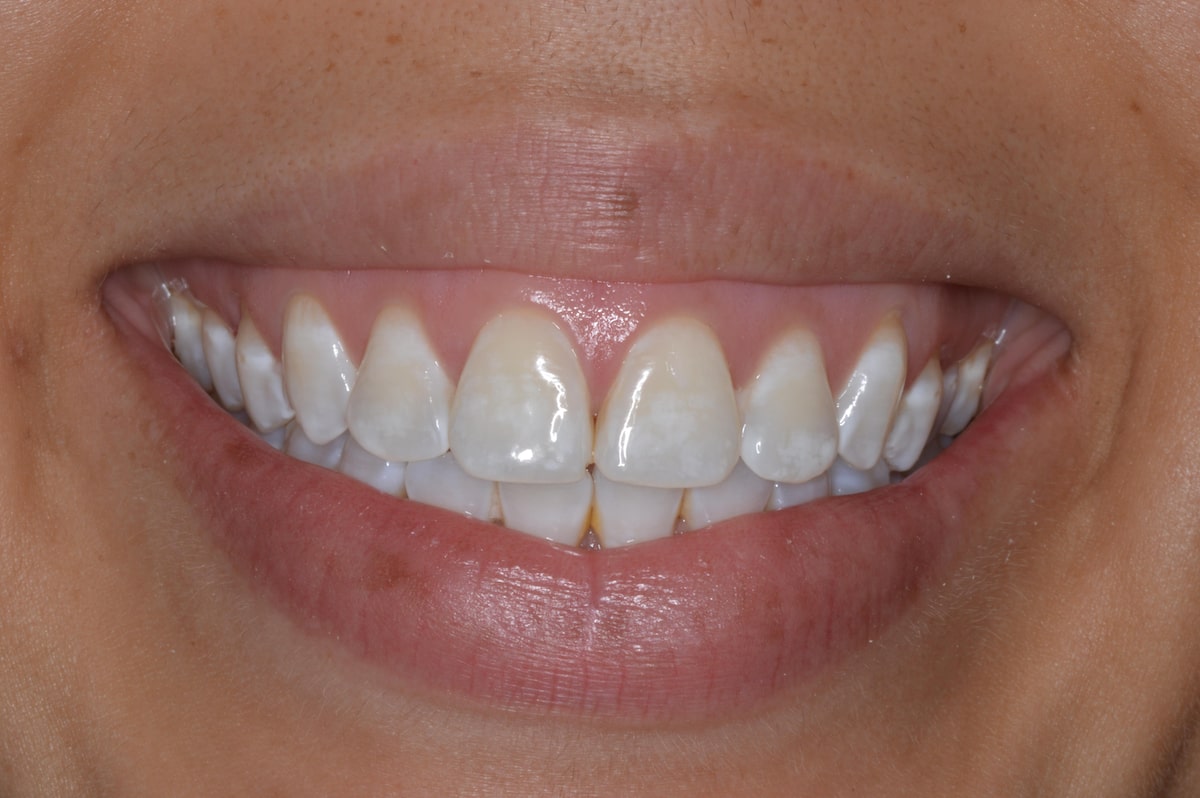Teeth White Spots Causes Explained

The appearance of white spots on teeth can be a source of concern for many individuals, as it may affect the aesthetic appeal of one’s smile. These spots, also known as hypoplasia or fluorosis, are often caused by a variety of factors that influence the development and health of tooth enamel. Understanding the underlying causes of white spots on teeth is crucial for addressing the issue effectively and preventing further occurrence.
One of the primary causes of white spots on teeth is the excessive consumption of fluoride, particularly during the developmental stages of tooth formation. Fluoride, while beneficial for oral health in moderation, can lead to dental fluorosis when ingested in high amounts. This condition manifests as white or yellowish spots on the teeth, and in severe cases, it can cause pitting or discoloration of the enamel. The sources of excessive fluoride exposure include community water fluoridation, fluoride-rich toothpaste, and certain dietary habits.
Another significant factor contributing to the development of white spots on teeth is poor oral hygiene. Inadequate brushing and flossing habits can lead to the accumulation of plaque and tartar on the teeth, causing demineralization of the enamel. This demineralization process can result in the formation of white spots, especially in areas where the teeth are more prone to decay, such as the molars and premolars. Furthermore, the consumption of sugary and acidic foods and beverages can exacerbate the problem by providing a conducive environment for bacteria to thrive and produce acids that erode the tooth enamel.
Trauma to the teeth, whether due to an accident or habitually grinding and clenching the jaw, can also cause white spots to appear. When a tooth experiences trauma, it can lead to the disruption of the enamel formation process, resulting in hypoplastic areas that appear as white spots. Similarly, certain medical conditions, such as celiac disease or enamel hypoplasia, can affect the development of tooth enamel, leading to the formation of white spots.
In addition to these factors, white spots on teeth can also be caused by genetic predisposition. Some individuals may be more susceptible to developing white spots due to their genetic makeup, which can influence the formation and structure of their tooth enamel. Moreover, the use of certain medications, such as tetracycline, during pregnancy or early childhood can cause discoloration of the teeth, including the formation of white spots.
Addressing white spots on teeth requires a multifaceted approach that involves preventive measures, professional dental care, and, in some cases, cosmetic treatments. To prevent the formation of white spots, it is essential to practice good oral hygiene, including regular brushing and flossing, and to limit the consumption of sugary and acidic foods and beverages. Additionally, using a fluoride-free toothpaste and avoiding excessive fluoride exposure can help mitigate the risk of dental fluorosis.
For individuals who already have white spots on their teeth, professional dental care can provide effective solutions. Dental professionals can offer guidance on proper oral hygiene techniques and provide treatments such as fluoride varnishes or dental bonding to address the appearance of white spots. In severe cases, cosmetic procedures like teeth whitening or veneers may be necessary to achieve a uniform and aesthetically pleasing smile.
In conclusion, white spots on teeth are a common issue that can arise from a variety of factors, including excessive fluoride consumption, poor oral hygiene, trauma, medical conditions, and genetic predisposition. By understanding these causes and adopting preventive measures, individuals can reduce their risk of developing white spots and maintain a healthy, appealing smile. For those already experiencing white spots, seeking professional dental advice can provide the necessary guidance and treatment options to address both the aesthetic and health-related concerns associated with this condition.
What are the primary causes of white spots on teeth?
+The primary causes of white spots on teeth include excessive fluoride consumption, poor oral hygiene, trauma to the teeth, certain medical conditions, and genetic predisposition.
How can I prevent white spots from forming on my teeth?
+To prevent white spots, practice good oral hygiene, limit sugary and acidic foods and beverages, avoid excessive fluoride exposure, and consider using a fluoride-free toothpaste.
What treatments are available for white spots on teeth?
+Treatments for white spots on teeth include fluoride varnishes, dental bonding, teeth whitening, and veneers. The most appropriate treatment depends on the severity and cause of the white spots, and should be determined in consultation with a dental professional.
Ultimately, the key to addressing white spots on teeth lies in a combination of preventive care, professional dental interventions, and a deep understanding of the underlying factors that contribute to this condition. By embracing this holistic approach, individuals can not only mitigate the appearance of white spots but also foster a profound appreciation for the intricate dynamics of oral health and its impact on overall well-being.
